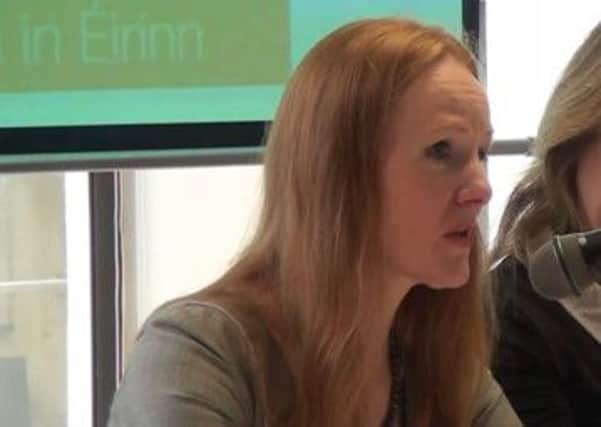Islandmagee witches plaque plan sparks ‘devil worship’ outburst


In what is believed to have been the last witch trials in Ireland, the women were convicted in a Carrickfergus court over 300 years ago and spent a year in prison, as well as being put in the public stocks.
Novelist Martina Devlin has penned a new book on the subject, and she also requested that Larne Borough Council erect a small memorial to the women.
Advertisement
Hide AdAdvertisement
Hide AdThe local authority has proposed placing a small plaque and plants in the area of the Gobbins Visitor Centre in Islandmagee.
But TUV Alderman Jack McKee has decried the proposal as “anti-God” and said he could not support it.
According to minutes of a council meeting in January, Ald McKee said he “could not tell whether or not the women had been rightly or wrongly convicted as he didn’t have the facts and was not going to support devil worship”.
Chief executive Geraldine McGahey advised that Ms Devlin’s book told the story of how the women had been convicted “on what appeared to be very flimsy evidence”.
Advertisement
Hide AdAdvertisement
Hide AdSpeaking to the Times, Alderman McKee claimed the plaque would become a “shrine to paganism” and added: “I could not support the proposal because I believe it to be anti-God.”
A recorded vote was taken on the proposal, with six members voting for, two against and the rest abstaining.
The story of the Islandmagee witch trial has held people in thrall for hundreds of years.
Eight women were arrested in 1711, put on trial and convicted on the testimony of Mary Dunbar, who claimed they attacked her in her bed.
Advertisement
Hide AdAdvertisement
Hide AdThe event was caused by a phenomenon of poltergeists and possession in the house of a Mrs Haltridge. In 1710, she had been affected by poltergeists. She had been unable to get any sleep, clothes had been thrown around the house, and a boy had shown himself to her, and vanished.
One night, she was heard screaming that she was being attacked with a knife, and was later found dead.
In 1711, Mrs Haltridge the Younger, daughter-in-law of the deceased Mrs Haltridge, was visited by Mary Dunbar.
Dunbar was also tormented by the poltergeists. An apron with “witches’ knots” was found, and Dunbar claimed to be attacked by women in her bed. On her word, the eight women were arrested and put on trial for having caused the phenomena with witchcraft.